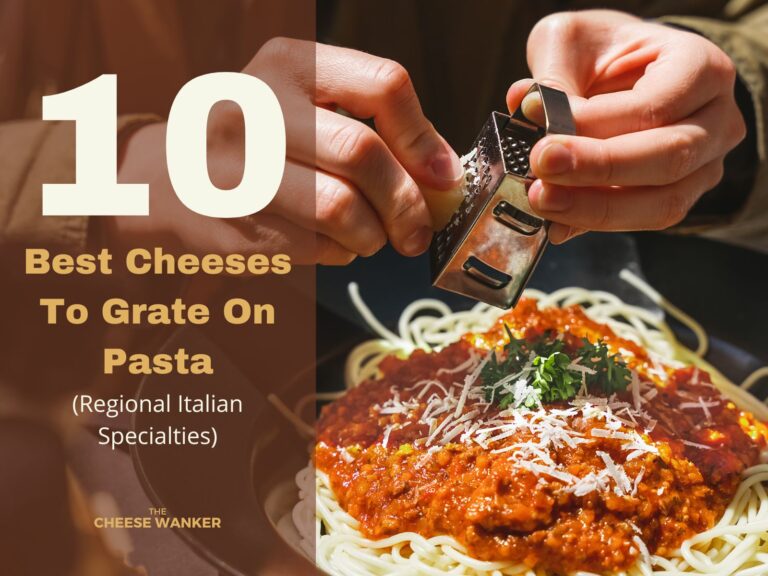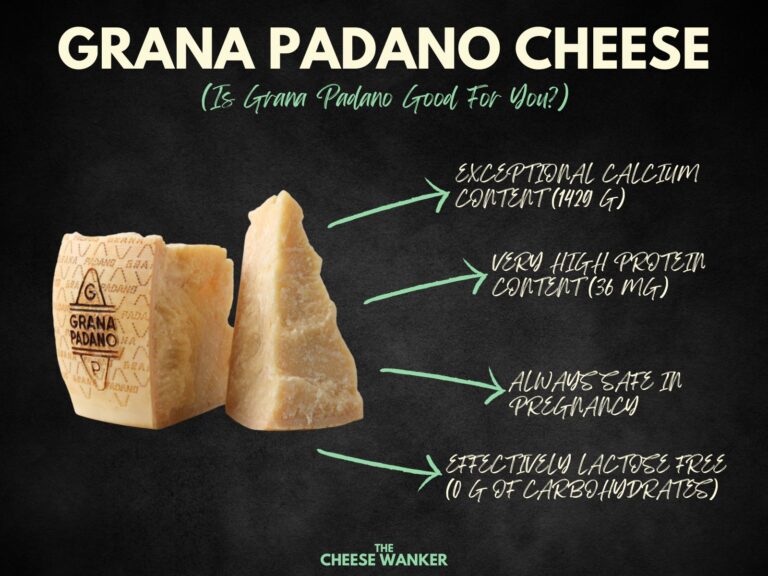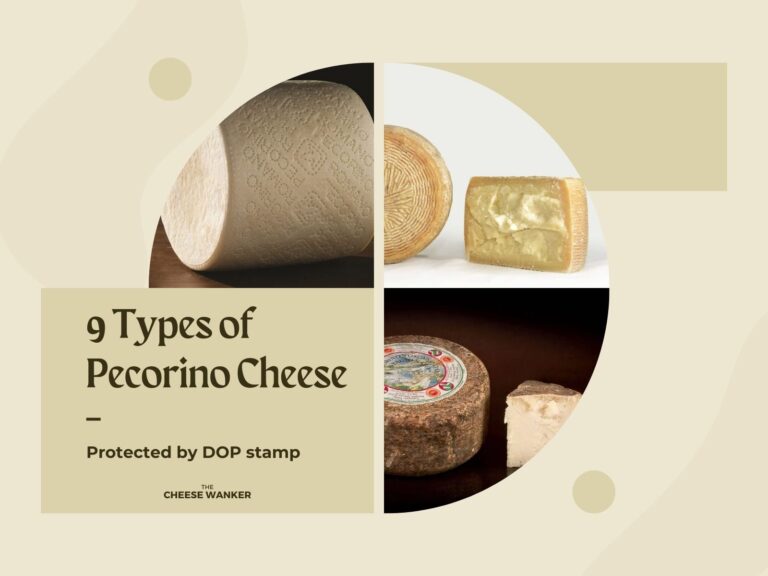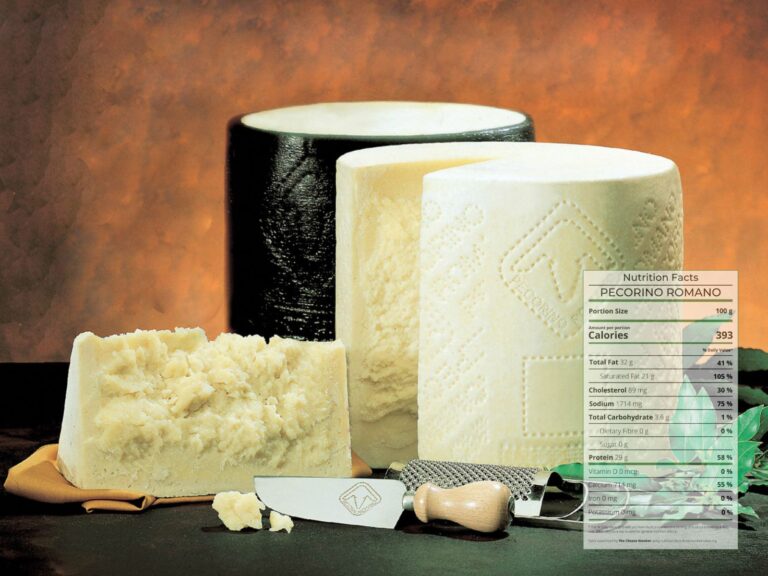With a grand total of nine DOP cheeses, Pecorino is without doubt Italy’s most protected cheese. In this post, we will take a deep dive into this pressed sheep’s milk cheese. Read on to learn about its history, production and flavour. And, as always, we will give you some great tips on how best to serve this delicious cheese.
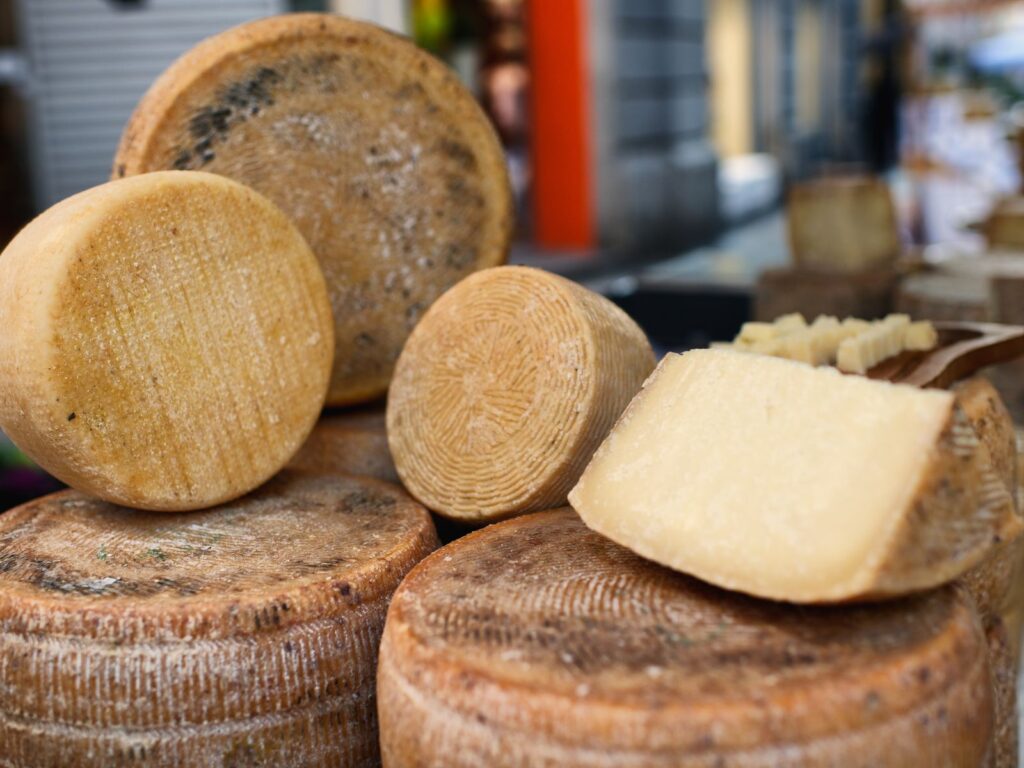
SEE ALSO: Could Provolone actually be Italy’s most versatile cheese? →
What does Pecorino mean?
Let’s start our exploration of this traditional sheep’s milk wonder with a quick Italian lesson. Unsurprisingly, the name Pecorino derives from the Italian word pecora which means “sheep”.
While cheesemakers in different regions make a number of local versions of Pecorino, they all use sheep’s milk. As we dig a little deeper into its tradition, you will find that regional makers use either raw or pasteurised milk.
History of Pecorino cheese
Without a doubt, Pecorino has a long and storied history. Indeed, its origins can be traced back to ancient times, when sheep were first domesticated in the Mediterranean region. The Etruscans, who lived in what is now Tuscany, were among the first to make cheese from sheep’s milk. They even had a God of plant life, wine and cheese (called Fufluns) and used cheese as a currency.
During the Roman Empire, Pecorino was a popular food among soldiers and traders, as it was a durable and easily transportable source of protein. Over time,the production of Pecorino cheese continued to spread throughout Italy, with different regions developing their own unique variations.
In the Middle Ages, monasteries played a major role in the production of Pecorino cheese, as they had the resources to maintain large flocks of sheep and the knowledge to make cheese.
During the Renaissance, Pecorino cheese became a luxury food enjoyed by the wealthy. As a matter of fact, Italian nobles often served the cheese at banquets and even gifted it to royalty. In the 19th century, with the expansion of the railway, Pecorino cheese began to be exported to other parts of Europe and even to America.
Where is Pecorino made?
Presently, Pecorino is produced throughout Italy, with the most famous regions being Sardinia (Sardo), Tuscany (Toscano), and Lazio (Romano). Moreover, each region has its own traditional methods of production and aging, resulting in a wide variety of Pecorino cheeses with distinct flavours and textures.
In addition to those regions, you can also find some lesser-known Pecorino producers in Sicily, Calabria and Basilicata. You can read more about the nine different DOP Pecorino cheeses here.
How is Pecorino made?
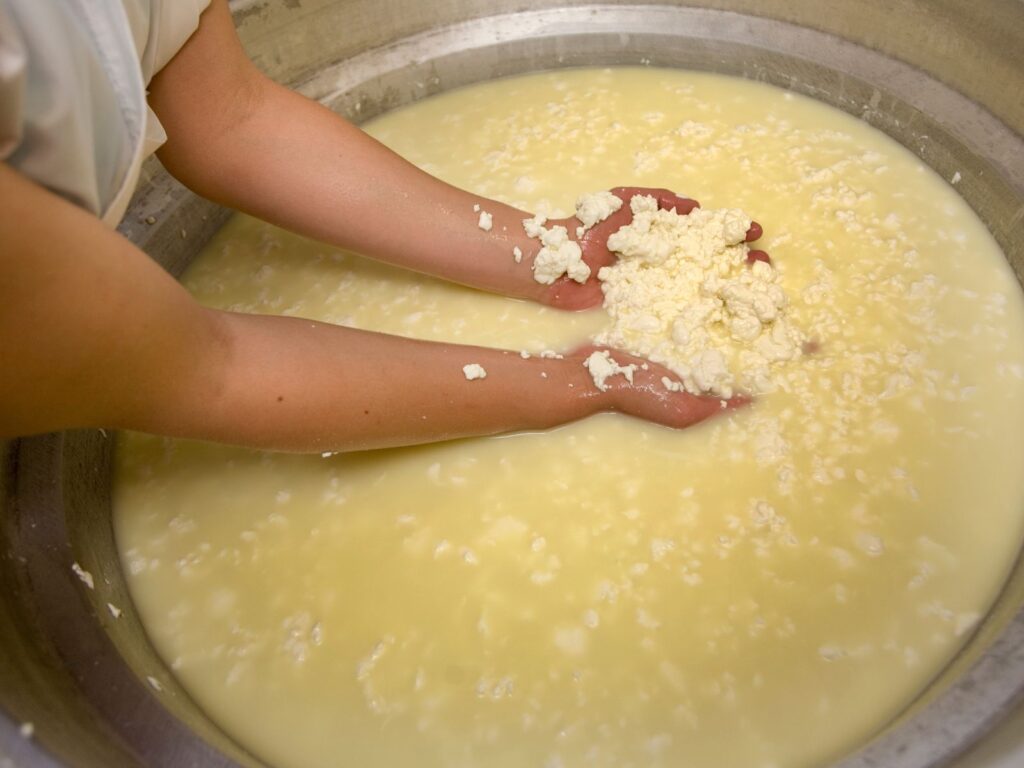
While Pecorino was traditionally an artisanal cheese, it is now made both on a small-scale and at a commercial level. While there are differences in the production depending on the scale, some of the basic methods have not changed since the Middle Ages.
Fresh sheep’s milk
Of course, it all begins with fresh sheep’s milk. The milk is collected from local farms, where sheep are typically raised on a diet of grass and herbs. Depending on the maker, they will either use raw milk or pasteurise it first.
Culture and rennet
Once the milk is ready to be converted into cheese, the maker adds starter culture and rennet for coagulation. This causes the whey (liquid) to separate from the curd (solids). Once the curd forms a solid mass, it is cut into smaller pieces to release even more whey.
Next, the cheesemaker cooks the curd to firm up its texture. Finally, they transfer the cooked curds into moulds and press them. Overall, this process removes more whey and gives Pecorino its signature shape.
Salting
The cheese is then salted and placed in a cool, humid aging room where it will mature for a period of time. The length of aging can vary depending on the type of Pecorino being produced, but can range from several weeks to several months. And this leads us to our next question.
What are the different ages of Pecorino?
The aging process of Pecorino cheese can vary depending on the type of Pecorino being produced. Here are three examples of different ages of Pecorino with tasting notes on each.
Fresco
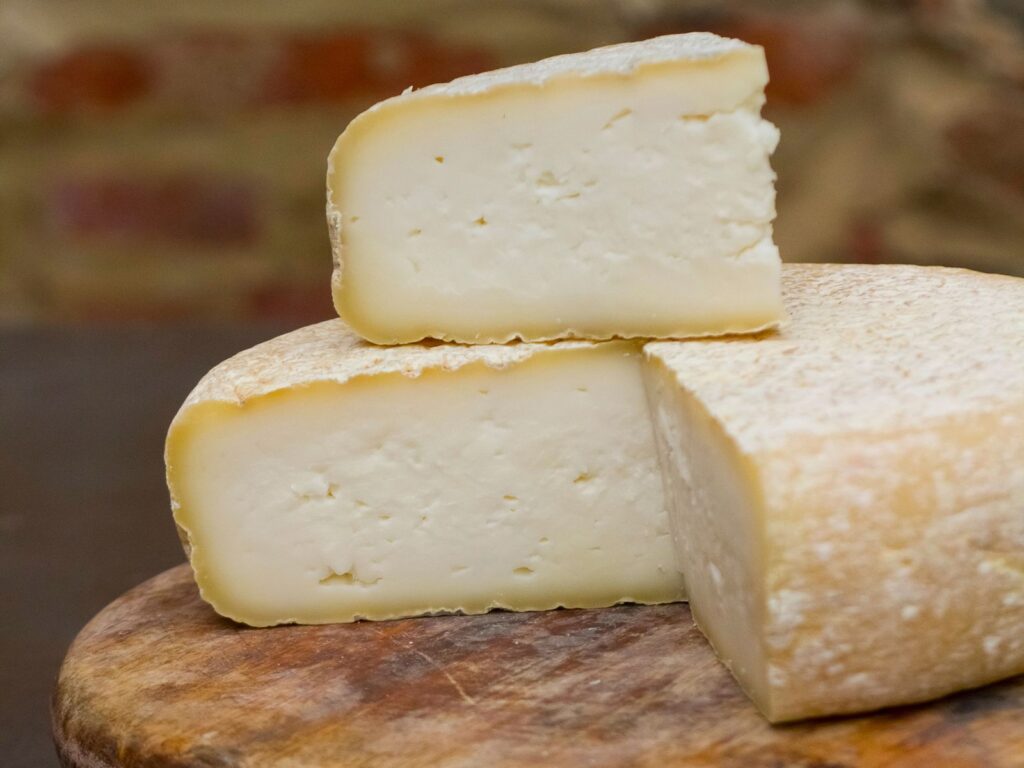
This type of Pecorino is aged for a very short period of time, usually only four weeks. It has a soft, creamy texture and a mild, sweet flavour.
Semi-stagionata
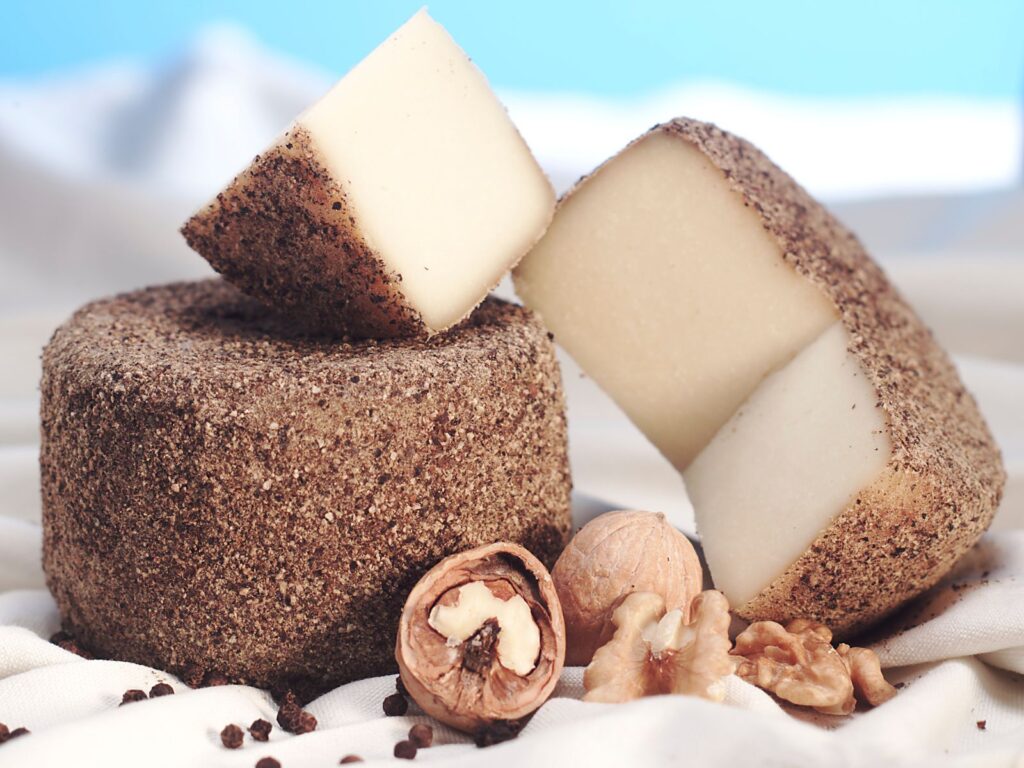
Next, we have a slightly more mature cheese. As you’ve probably guessed, semi-stagionata translates to “semi-aged”. Typically, an affineur will age these wheels for 2-3 months. As a result, it has a firmer texture and a more robust and pronounced flavour. One great example is Pecorino Toscano.
Stagionata
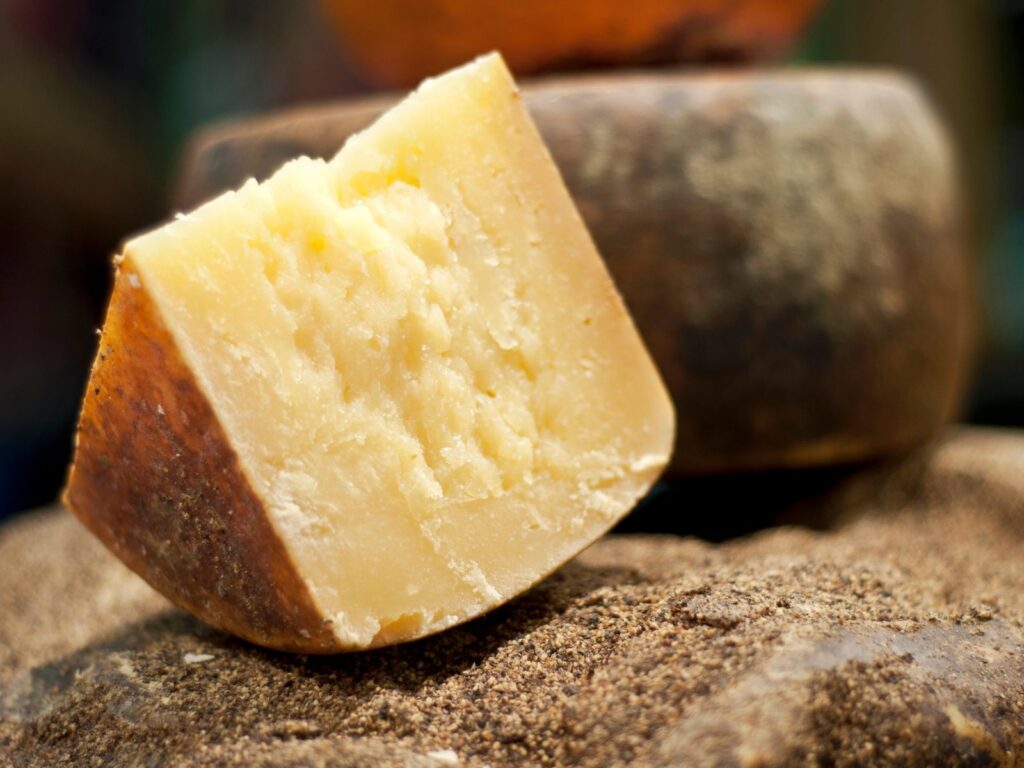
Finally, we have the most mature version of Pecorino. Wheels of Pecorino Stagionata age for a minimum of 4 months and up to 12 months. Therefore, this version of Pecorino develops a hard, crumbly texture and a strong, salty flavour. Without a doubt, the most famous Pecorino Stagionata is Pecorino Romano.
How to serve Pecorino like the Italians
Together with Provolone, Pecorino might just be Italy’s most versatile cheese. Indeed, there are a number of ways that the locals enjoy this pressed cooked cheese. Unsurprisingly, the best way to serve Pecorino will depend on its age and origin.
Pecorino as a table cheese
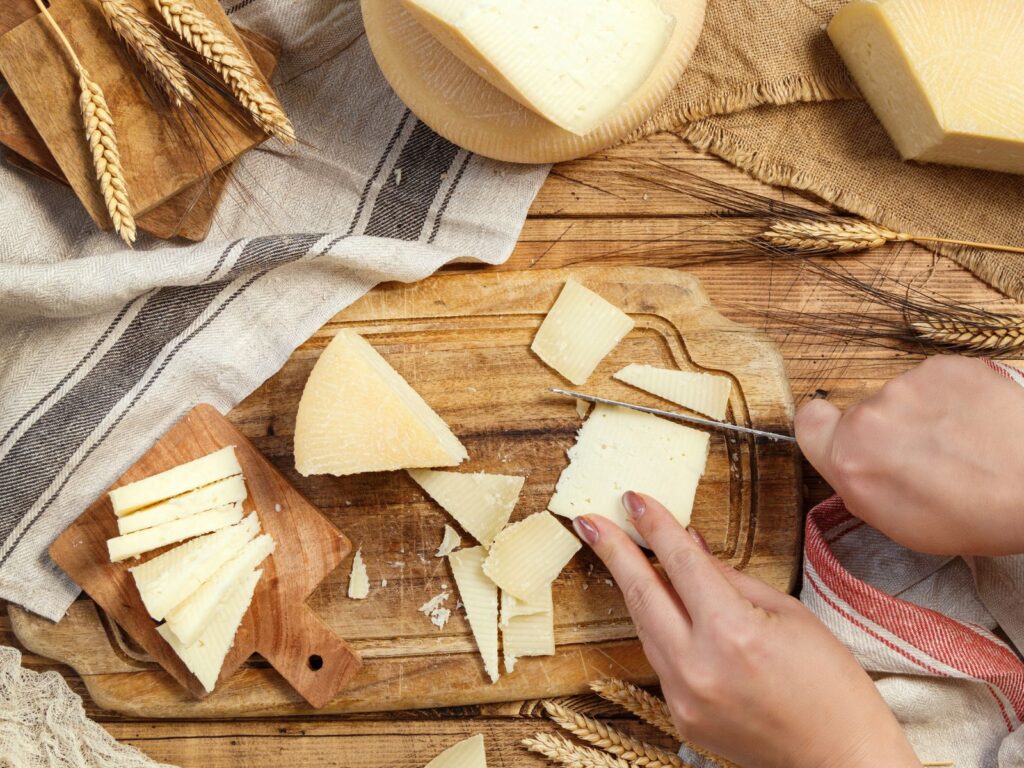
Due to its subtle flavours and semi-soft to semi-hard texture, Pecorino Fresco and Pecorino Semi-Stagionata make great table cheeses. You can pair these delectable cheeses with fruits, nuts, honey and jam.
Cooking with Pecorino
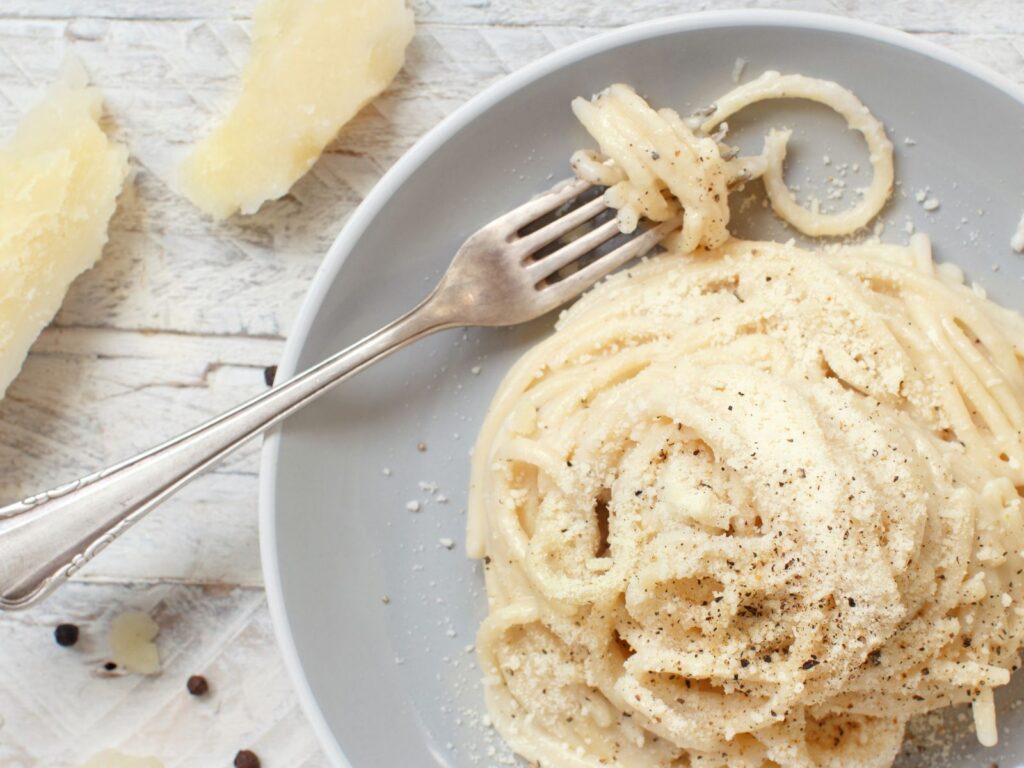
As for Pecorino Stagionata, you can make the most of its hard texture by grating it on top of your favourite Italian dish. Some great examples include pizza, risotto and pasta. As a matter of fact, the famous Italian dish Cacio e Pepe is a celebration of Pecorino, black pepper and pasta.
Is Pecorino good for you?
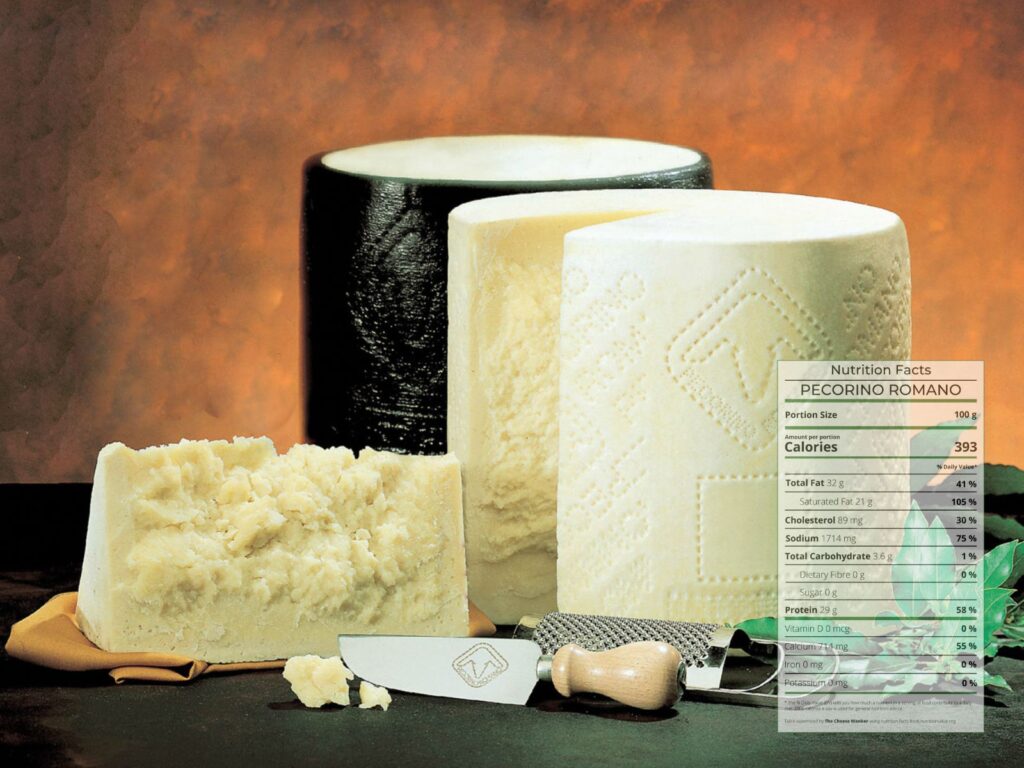
As is the case with most cheeses, Pecorino is a great source of protein and calcium. Moreover, it is also rich in essential nutrients such as vitamin B12, phosphorus, and zinc. Due to its high fat content, Pecorino is a great cheese for the ketogenic diet.
Finally, due to their long maturation period, both raw and pasteurised are safe in pregnancy and lactose intolerance. You can learn more about the nutrition facts for Pecorino by clicking here.
Alternatives to Pecorino
If you can’t get your hands on your favourite Pecorino or simply want to try something a little bit different, we’ve got three great recommendations for you.
Grana Padano
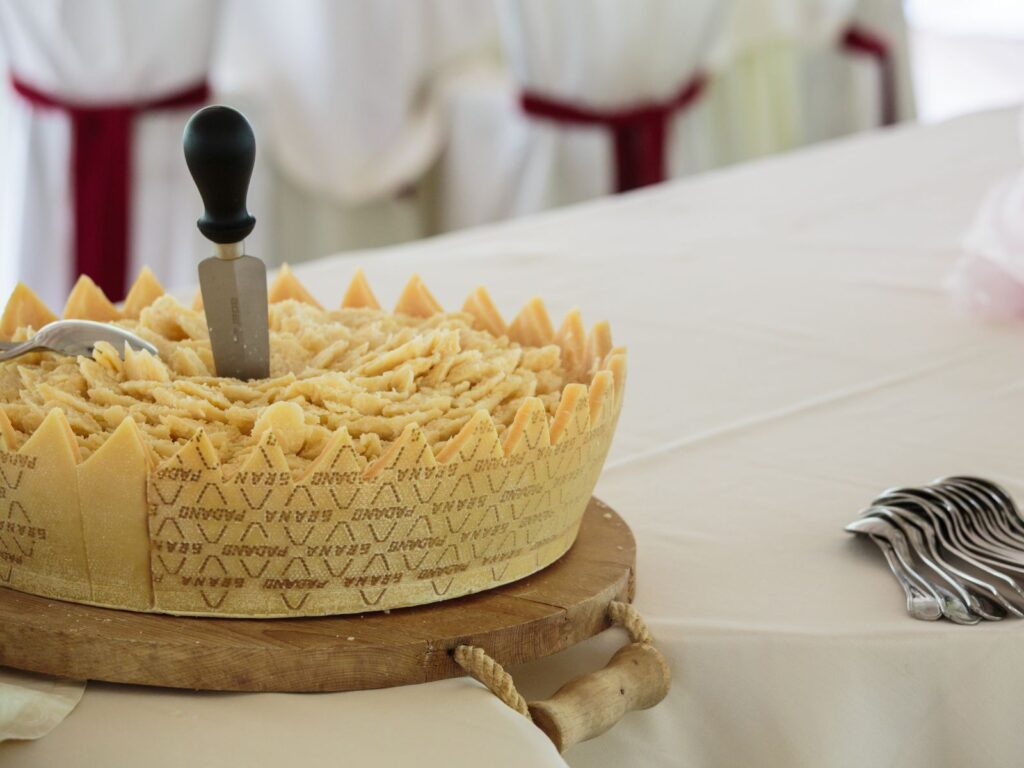
Grana Padano is a semi-fat pressed cooked cheese that is made from cow’s milk. Undoubtedly, it is one of the most popular and well-known grana cheeses in Italy, along with Parmigiano Reggiano.
Unlike the latter, Grana Padano originates exclusively from the Po River Valley in northern Italy. And the name “Grana Padano” is protected by the European Union’s Protected Designation of Origin (DOP) status.
Grana Padano is aged for at least 9 months, and it can be aged for up to 2 years. The longer the aging process, the more intense the flavour and the harder the texture. The cheese has a sweet, nutty flavour and a granular texture.
Because of this, Grana Padano is a great alternative to Pecorino for grating on top of pasta, pizza or risotto. And just like Pecorino Fresco, you can also serve it as a table cheese.
Piave
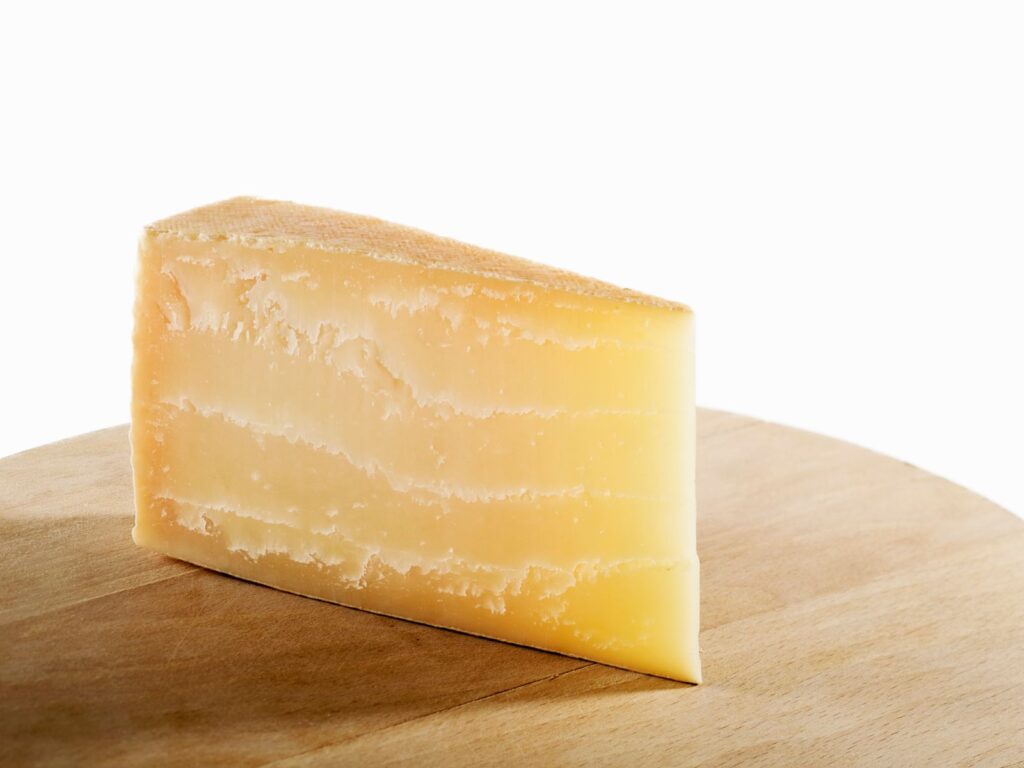
Next, we have Piave which is also a semi-fat cow’s milk pressed cheese. It is produced in the Piave river valley in the Veneto region of northern Italy. Like Pecorino and Grana Padano, Piave bears a DOP stamp that protects its name, geographical origin and production.
Piave cheese is aged for at least 5 months, and it can be aged for up to 12 months. The longer the aging process, the more intense the flavour and the harder the texture becomes.
Effectively, an aged Piave has a slightly sweet and nutty taste, and a very granular texture. Hence, the best way to serve this cheese is to grate it onto pasta, soups and salad. Also, it is a great table cheese and can be paired with local red wines and beer.
Monte Veronese
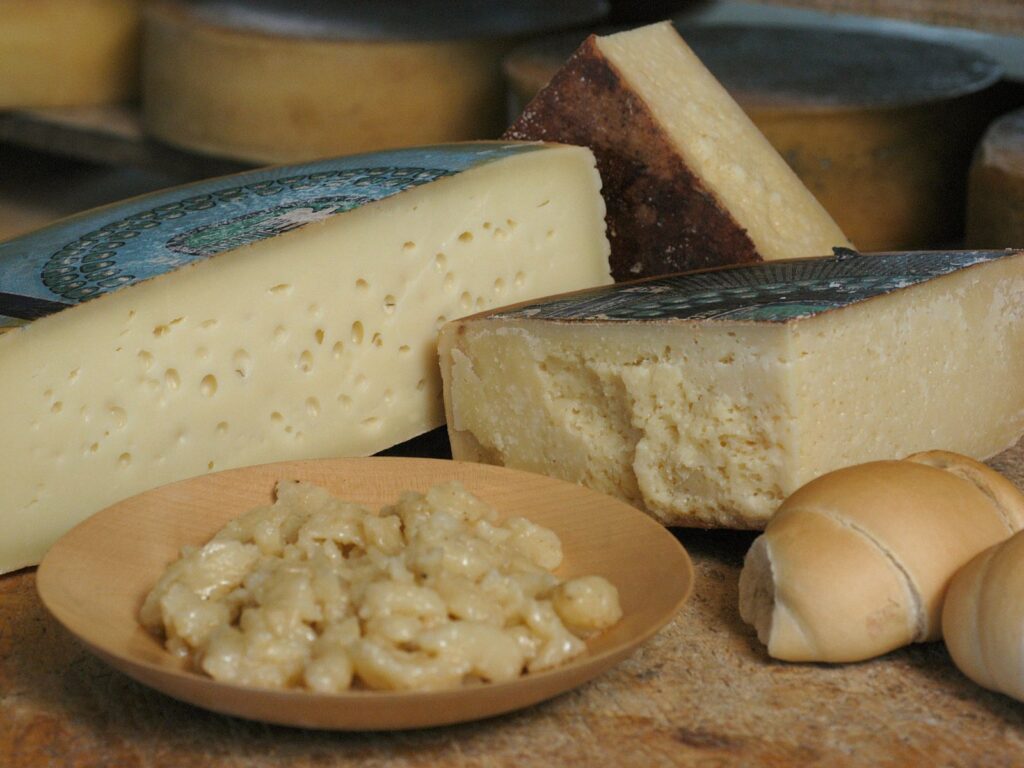
Our final recommendation is another cow’s milk pressed cooked cheese called Monte Veronese. Like our first two alternatives to Pecorino, Monte Veronese is a DOP cheese that is exclusively produced in the Verona province in the Veneto region of northern Italy.
Local cheesemakers age their wheels of Monte Veronese for a minimum of 4 months, and up to 18 months. As you would expect, the longer the aging process, the more intense the flavour and the harder the texture becomes.
A 12-month-old Monte Veronese has a slightly sweet and nutty taste, and a granular texture. The cheese is often grated and used as a topping for pasta dishes, soups, and salads. It’s also great for snacking, paired with a glass of wine or a beer.
Conclusion
Thank you for reading our post on Pecorino. As you can see, this traditional sheep’s milk cheese is made in various regions of Italy with a whopping nine different versions holding a DOP. What’s your favourite type of Pecorino? Let me know in the comments below.
